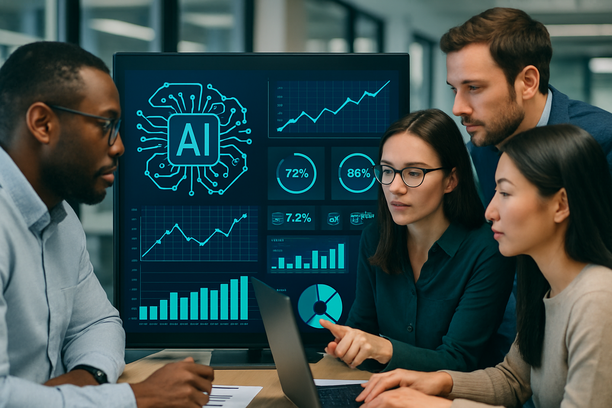Rethinking AI Security Beyond Traditional Measures
Securing AI systems demands a new kind of vigilance far beyond the traditional locks and firewalls that protect many digital systems today. While conventional security methods focus on guarding networks and devices from unauthorized access, AI introduces unique challenges that require a broader and deeper perspective on protection.
Unlike standard software, AI systems learn and evolve from data, making them vulnerable to risks not just from external hackers but also from problems within their own design and training processes. For example, biases hidden in training data can cause AI to make unfair or inaccurate decisions. Similarly, the integrity of AI models can be compromised by adversarial attacks where minor, often imperceptible, manipulations trick AI into error. These technical vulnerabilities intertwine with ethical concerns, operational safety risks, and the need for transparency and accountability in AI decisions.
Effective AI security demands a holistic approach that considers not just technology but also the people who design, deploy, and use AI systems. This includes safeguarding sensitive training data, continually monitoring AI behavior in real-world conditions, and ensuring strong governance to uphold principles of fairness and responsibility.
Specialized expertise is crucial to navigate this complex landscape. Companies that implement AI safely, like those following frameworks designed specifically for responsible AI development, are better equipped to anticipate and mitigate risks across all layers from data handling to user interaction. By integrating comprehensive security practices that cover all facets of AI, organizations can build reliable systems that earn trust and stand resilient in the face of evolving challenges.
For businesses looking to adopt AI with confidence, partnering with experienced teams who understand the intricate nuances of AI security, not just from a technical viewpoint but also an ethical and operational one, makes a significant difference. These experts help create AI solutions that do more than just function; they function safely, responsibly, and transparently in the environments where they matter most.
Understanding AI Vulnerabilities: The Hidden Risks
Artificial intelligence (AI) systems offer incredible opportunities but also come with unique security vulnerabilities that deserve careful attention. Unlike traditional software, AI relies heavily on data and complex models, which introduces risks only partly seen before in technology. Understanding these vulnerabilities helps organisations better protect their AI-powered solutions and maintain trust in their use.
One major security challenge is data poisoning. Since AI learns from large datasets, if an attacker manipulates that data by inserting false or misleading information, it can cause the AI system to make incorrect decisions. This might be subtle, such as slightly altering inputs so the AI misclassifies images or messages, which can have serious consequences in real-world applications like healthcare or finance.
Another risk is model theft or reverse engineering. The AI model itself contains valuable intellectual property and insights, and if an attacker gains access, they can copy or manipulate it. This can lead to competitive loss or create opportunities for adversaries to find weaknesses in the model’s decision-making logic.
Adversarial attacks also pose a threat, where specially crafted inputs often imperceptible to humans trick AI systems into producing wrong outputs. For example, a small tweak in an image can cause an AI-powered security camera to misidentify a person. These attacks exploit the way AI models interpret data, revealing a gap in robustness.
Besides these, AI systems can suffer from bias and fairness issues that may not be direct security vulnerabilities but impact ethical use and trustworthiness. Protecting privacy is another crucial aspect, as AI often processes sensitive personal data. Without proper safeguards, there is a risk of data breaches or misuse.
Due to these complexities, implementing safe and secure AI is not straightforward. It requires a skilled team to continuously monitor, assess risks, and apply strong safety frameworks throughout design and deployment. This is where experienced partners play a vital role. Organisations like FHTS specialise in safe AI implementation, ensuring that AI systems are not only effective but built with the highest standards of security and ethical practices. Their approach includes rigorous testing against these vulnerabilities and embedding safeguards that address the real risks AI faces today.
In short, AI security vulnerabilities are unique and multifaceted. Awareness and proactive management are essential for harnessing AI’s benefits safely. With expert guidance, implementing resilient AI solutions becomes achievable, supporting innovation while protecting users and organisations alike.
Learn more about frameworks for safe and responsible AI development
Core Principles of AI Security: Beyond the Basics
Securing AI systems starts with a foundation built on a few key principles that ensure they work safely, reliably, and responsibly. One of the most important is safeguarding data integrity. This means that the data feeding AI models must be accurate, complete, and protected from tampering. When the data is trustworthy, AI can make better decisions, reducing risks of errors or bias. Keeping data safe is like locking your diary so nobody else can change your story behind your back.
Another essential principle is enhancing model robustness. AI models should be designed to handle unexpected situations or attacks gracefully. Robustness ensures that even if some data is slightly off or if someone tries to trick AI with misleading inputs, the system still performs correctly without failing or making harmful mistakes. Think of it as equipping AI with a safety net, so it doesn’t fall apart at the first sign of trouble.
Strict access controls form the third pillar of AI security. Only authorized people or systems should be able to interact with AI models or access sensitive data. Implementing strong authentication methods and carefully managing permissions prevents malicious or accidental misuse. This is similar to having different keys for different rooms in a house, so only the right people can enter where they should.
Best practices also encourage ongoing monitoring and auditing to detect anomalies quickly. Regularly testing AI systems through simulated attacks or “red team” exercises can reveal hidden vulnerabilities before they cause harm. This proactive approach helps maintain trustworthiness and reliability over time.
Companies focused on safe AI implementation, such as FHTS, integrate these principles seamlessly into their solutions. Their experienced teams understand that security is not a one-time check but a continuous journey involving careful design, rigorous testing, and vigilant oversight. By partnering with experts who prioritize data integrity, system robustness, and access control, organizations can build AI they genuinely trust, helping them avoid common pitfalls and achieve safer, smarter outcomes.
Learn more about how secure AI models function and why data quality matters in AI at FHTS’s resources on What Data Means to AI and Why It Needs So Much and How FHTS Keeps Sensitive Data Safe: Strategies and Best Practices. These insights highlight the practical steps that turn AI’s potential into trustworthy real-world applications.
Advanced Strategies for Securing AI Systems
When it comes to securing AI systems, the challenges are unique and constantly evolving. Two advanced strategies gaining attention for their effectiveness in strengthening AI security are adversarial training and continuous monitoring.
Adversarial training involves exposing AI systems to carefully crafted challenging scenarios during their learning process. These scenarios are designed to simulate potential attempts to trick or confuse the AI, such as manipulated inputs or deceptive data. By training AI on such adversarial examples, the system learns to resist manipulation and improves its robustness against attacks that could cause incorrect or harmful outputs. This approach strengthens the AI’s ability to maintain reliable performance even when faced with unexpected or malicious inputs.
Continuous monitoring complements this by keeping an ongoing watch on AI systems in real-world operation. Instead of a one-time test, continuous monitoring involves tracking the AI’s behaviour, performance metrics, and data quality over time. This helps quickly identify any unusual or suspicious activity that could indicate a breach or a malfunction. Early detection through monitoring can trigger prompt interventions to fix problems before they escalate, ensuring the AI remains safe and trustworthy for users.
Together, these techniques form part of a sophisticated toolkit for protecting AI. Their implementation requires thorough understanding, specialized expertise, and a commitment to ethical standards. This is especially vital for businesses and organisations that depend on AI for critical decisions or public safety.
Experts in AI safety, such as those at FHTS, bring deep knowledge in these areas. Their experienced teams guide organisations through adopting these advanced methods tailored to specific needs, reducing risks while maximizing AI benefits. Their strategic approach ensures that AI systems not only perform well but also align with responsible innovation principles, safeguarding data integrity, fairness, and user trust.
For those interested in diving deeper into AI safety frameworks and practices, exploring resources on continuous oversight and ethical AI design can be enlightening. This ongoing journey toward safer AI is a collective effort, blending technology, human judgement, and careful monitoring to build resilient and dependable AI for the future.
Safe and Smart Framework guiding responsible AI development | Why vigilant oversight is essential in AI | Red team tests to enhance AI safety
Future Outlook: Evolving AI Security in a Dynamic Threat Landscape
The future of AI security is shaped by rapid advances in artificial intelligence technology alongside evolving threats that require ever more agile and anticipatory defense strategies. As AI systems become integral in sectors like healthcare, finance, public safety, and marketing, safeguarding these technologies becomes not only a technical challenge but a critical demand for trust and responsibility.
Emerging trends in AI security point towards greater integration of adaptive security measures. These involve systems that learn from new data and threat patterns continuously, enhancing their resilience against increasingly sophisticated attacks. For example, AI-powered anomaly detection tools can identify unusual behavior early, preventing breaches before damage occurs. Another growing area is the use of explainable AI, which helps people understand AI decisions and strengthens transparency and accountability.
However, these advancements bring significant challenges. The complexity of AI models often makes it difficult to detect vulnerabilities, and the sheer volume of data required for training increases exposure risks. Additionally, AI can be manipulated by adversaries through techniques like data poisoning or adversarial attacks, which subtly alter input data to mislead AI outputs. Privacy concerns are magnified as AI systems process sensitive information, demanding robust data protection methods.
To address these challenges, security measures must be proactive and flexible. This means implementing comprehensive frameworks that not only protect AI throughout its lifecycle from data sourcing and model training to deployment and monitoring, but also incorporate human oversight to catch potential errors or biases. A layered approach to security, combining technical defenses with ethical guidelines, is essential to foster trust in AI.
The importance of working with experts experienced in safe AI implementation cannot be overstated. Companies like FHTS exemplify this approach by offering tailored solutions that balance innovation with safety. Their expertise in developing and deploying AI systems using responsible frameworks ensures that AI not only performs effectively but also aligns with ethical standards and regulatory requirements.
In sum, the future of AI security lies in blending adaptive technologies with vigilant human governance, building systems that are not only smart but safe and trustworthy. This forward-thinking mindset is crucial to harness AI’s full potential while safeguarding people and businesses in an increasingly digital world.
For more on foundational frameworks and practical safe AI methodologies, explore resources like FHTS’s Safe and Smart Framework and insights on why bias in AI is like unfair homework grading.
Sources
- FHTS – Why vigilant oversight is essential in AI
- FHTS – How FHTS Keeps Sensitive Data Safe: Strategies and Best Practices
- FHTS – What Data Means to AI and Why It Needs So Much
- FHTS – What is the Safe and Smart Framework
- FHTS – Why bias in AI is like unfair homework grading
- FHTS – Red team tests to enhance AI safety


